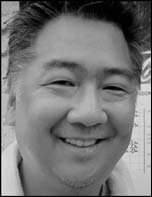Why is it that whenever people want to charge you more for something, they often point out that previously you were getting a good deal? Cheer up! they seem to say. You were getting a good deal, just now you’re going to pay more. You hear this from the University of Washington all the time. We were an extremely good deal! the administration insists, while increasing tuition 82 percent in four years.
How is that an effective rhetorical strategy? It’s more like narcissistic need: “You don’t understand. I really need this.”
Here’s Mayor McGinn announcing a new strategic plan for Seattle City Light: “Seattle City Light’s low-cost, reliable electricity is a significant driver for our economy. It’s one of the biggest reasons businesses choose to locate in Seattle,” quoth Hizzoner. Compare that to the Seattle Times takeaway: “Mayor to propose Seattle City Light rate increase of 31% over 6 years.”
Keep in mind that this would follow the past two years’ increase of 18 percent. I’m not an arithmetician, but it’s as if we’re moving away from that “low-cost” modifier somehow. That’s my gut feeling. (As a side note, because we get so much energy from hydroelectric dams, Seattle’s energy costs don’t compare to utilities nationally. To the extent our costs become “competitive” with with utilities dependent on coal and nuclear, it’s actually a trend toward inefficiency.)
I have to look askance when the Mayor explains that, should the City Council approve the proposal sometime mid-June: “[A] rate proposal covering only the next two years will be submitted later in the year as part of the budget process. After that, rate decisions will be determined after the strategic plan is reviewed every two years.”
If I understand this correctly, that means that rates could increase even more? If it were deemed strategic? History would teach us that mayors and city councils find rate increases terribly strategic.
Seattle City Light paid $140,000 to consultants last year, who found $35 million in potential savings, adds the Times. City Light Superintendent Jorge Carrasco promises to save “$18 million a year through efficiencies by the third year of the plan.” That’s about half of what’s possible; the Mayor and City Council haven’t had much luck getting unions to hop on board the efficiency train.
But increases in electric rates, by contrast, add to the city’s general fund. There’s strategy everywhere you look!
The increase for the “average” home is supposed to be $35 per year, or $210 over the six years. However, that would suggest the average home is paying $64 per month for electricity. I happen to have baseboard heat, an electric stove, and a roommate who has turned our spare room into a small IT center. Our winter bills run $150 per month, even leaving the place unheated during the day. We’re lucky to duck below $100 in the summer.
This is not to disregard Seattle City Light’s infrastructural needs; the utility has been operating too close to the edge for comfort when it comes to maintenance and replacement, let alone expansion of capacity. (The strategic plan calls for a new substation north of downtown, the first built in 30 years.) But why does building for capacity feel like a bribe?





